#still one of the hottest scenes in the history of filmmaking
Text
Harold Lloyd: The Silent Film Comedy Pioneer
Beverly Hills tours will take you past many homes of today’s hottest stars as well as those of past greats. One name from the silent era that ranks up there with Charlie Chaplin is Harold Lloyd whose home “Greenacres” was/is located in Beverly Hills. Fans of Lloyd can still take a look at where this famous silent comedian lived.
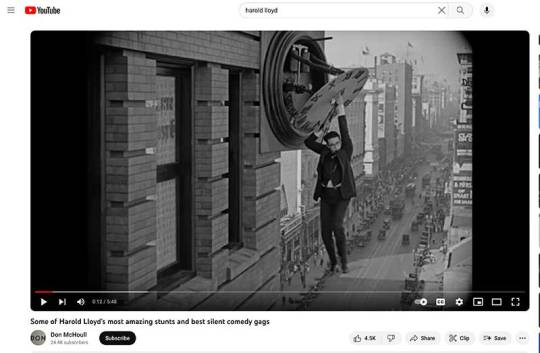
Harold Lloyd, born on April 20, 1893, in Burchard, Nebraska, is often considered one of the greatest comedians in the history of cinema. With a career spanning over four decades, he left an indelible mark on the world of silent film comedy, making audiences roar with laughter through his iconic characters and daring stunts. This essay delves into the life and career of Harold Lloyd, highlighting his significant contributions to the art of filmmaking and his enduring legacy in the world of entertainment.
youtube
Early Life and Beginnings: Harold Clayton Lloyd was born to James Darsie Lloyd and Sarah Elisabeth Fraser. Tragedy struck early in his life when, at the age of nine, he lost two fingers while playing with a bomb-like device. Despite this accident, Lloyd never let it hinder his ambitions, demonstrating remarkable resilience and determination. It was this very determination that would come to define his career in the film industry.
Lloyd's introduction to show business came when he moved to San Diego, California, as a teenager. He began working as an extra in various films, which ignited his passion for the silver screen. His persistence led him to be noticed by legendary filmmaker Hal Roach, who would become a pivotal figure in Lloyd's career.
The Birth of the Glasses Character: One of Harold Lloyd's most iconic trademarks was his round glasses, which became synonymous with his screen persona. This distinctive feature, initially adopted in his early silent films, eventually evolved into a symbol of his comedic identity. The glasses character was relatable, endearing, and a stark departure from the eccentricity of his contemporaries like Charlie Chaplin and Buster Keaton. It embodied the everyday man striving for success, which resonated deeply with audiences of the time.
The Lloyd-Roach Collaboration: Harold Lloyd's career took off under the guidance of Hal Roach, a pioneering film producer and director. Together, they created a series of short silent comedies known as the "Lonesome Luke" series, in which Lloyd played the character of a clumsy and bumbling young man. These films served as a training ground for Lloyd, allowing him to refine his comedic timing and develop his signature glasses character.
However, it was in 1917, when Lloyd and Roach decided to abandon the "Lonesome Luke" character and create something new, that Harold Lloyd truly found his niche. The result was the birth of "The Glasses Character," a relatable and ambitious young man who aimed high but often found himself in hilarious predicaments. This character marked a turning point in Lloyd's career and catapulted him to stardom.
Mastering Visual Comedy: Harold Lloyd was a master of visual comedy. He had an innate ability to create elaborate and meticulously choreographed physical gags that had audiences on the edge of their seats. His famous clock tower sequence in "Safety Last!" (1923) is a prime example of his daring stunts and impeccable timing. In this iconic scene, Lloyd hangs from the hands of a clock high above the streets of Los Angeles, a stunt that has become emblematic of silent film comedy itself.
Lloyd's commitment to safety was paramount. He used a variety of safety precautions while performing these risky stunts, and the use of clever camera angles and editing techniques made his feats appear even more perilous than they were. This commitment to both safety and realism was a testament to his dedication to his craft and his desire to entertain audiences without putting his life at undue risk.
Innovation in Storytelling: Beyond his physical comedy prowess, Harold Lloyd was also an innovator in storytelling. He understood the importance of character development and emotional engagement, even in the context of silent comedies. Unlike some of his contemporaries, who relied solely on slapstick humor, Lloyd's films often featured well-crafted narratives and character arcs.
One of his notable achievements in storytelling was the integration of romance into his comedies. In films like "Girl Shy" (1924), he seamlessly blended romance and humor, endearing his characters to audiences and adding depth to his stories. This combination of heartwarming romance and side-splitting comedy set Lloyd's work apart from other silent comedians.
Transition to Sound and Continued Success: With the advent of sound in cinema, many silent film stars struggled to adapt. However, Harold Lloyd managed to make a successful transition. His first sound film, "Welcome Danger" (1929), was well-received, thanks to his impeccable comedic timing and the incorporation of sound in a way that complemented his visual gags. Though Lloyd's popularity waned somewhat during the sound era, he continued to make films and remained a beloved figure in Hollywood.
Legacy and Influence: Harold Lloyd's contributions to cinema extend far beyond his comedic talent. He played a pivotal role in the development of Hollywood and the art of filmmaking. His innovative approach to comedy and storytelling set new standards for the industry, influencing generations of filmmakers to come.
One of the most significant aspects of Lloyd's legacy is his influence on future comedians and filmmakers. His work served as a blueprint for comedians like Jerry Lewis and Woody Allen, who incorporated physical comedy and visual gags into their own careers. His impact is also evident in the works of directors such as Steven Spielberg and Peter Bogdanovich, who have praised Lloyd's contributions to cinema.
In addition to his creative influence, Lloyd's philanthropic efforts left a lasting mark. He was instrumental in founding the Harold Lloyd Trust, which supports film preservation and education. His dedication to preserving silent film history has helped ensure that future generations can enjoy and appreciate the art form that he helped pioneer.
Conclusion: Harold Lloyd's career was a remarkable journey from a young extra with a dream to one of the most influential comedians in the history of cinema. His iconic glasses character, daring stunts, mastery of visual comedy, and commitment to storytelling set him apart as a true pioneer in the silent film era. Even as cinema transitioned to sound, Lloyd adapted and continued to make his mark on the industry.
Today, Harold Lloyd's films are celebrated for their timeless humor and enduring appeal. His legacy lives on not only in his cinematic achievements but also in the generations of comedians and filmmakers he inspired. His dedication to the preservation of silent film history ensures that his contributions to the art of filmmaking will continue to be appreciated for generations to come. Harold Lloyd will forever be remembered as a comedy legend who made the world laugh through the magic of silent cinema.
0 notes
Text
A Year in Review: The 25 Best Films of 2019
This list may seem a few months late from the rest of the media, but I consider the movie season to stretch 14 months, from the start of the Sundance Film Festival in January through the end of the Oscars ceremony in February. This year's movie season was shortened as the 92nd Academy Awards were held about three weeks earlier than usual, commencing on Feb. 9. Of course, South Korean director Bong Jon-ho's "Parasite" took home the Best Picture prize making history as the Academy's first-ever non-English language film to take home the top award.
Now that the Oscars have officially wrapped up, and the 2020 movie season is revving up (to a weak start), I feel comfortable with sharing my favorite 25 films of 2019. From box office hits to smaller gems, below is a breakdown of the top films that debuted last year.
25. “The Beach Bum,” directed by Harmony Korine

24. “A Beautiful Day in the Neighborhood,” directed by Marielle Heller

23. “Toy Story 4,” directed Josh Cooley

22. “Alita: Battle Angel,” directed by Robert Rodriguez
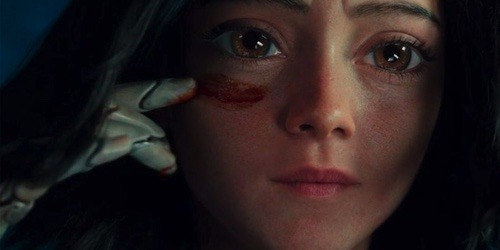
21. “The Lighthouse,” directed by Robert Eggers

20. “A Long Day’s Journey into Night,” directed by Bi Gan
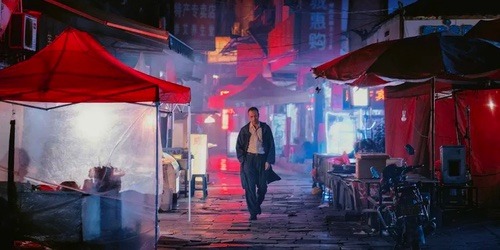
19. “Doctor Sleep,” directed by Mike Flanagan

18. “6 Underground,” directed by Michael Bay

17. “Uncut Gems,” directed by Josh Safdie and Benny Safdie

16. “The Nightingale,” directed by Jennifer Kent
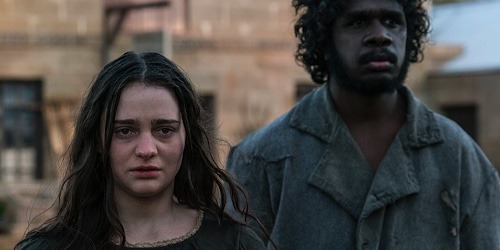
15. “Hustlers,” directed by Lorene Scafaria

Lorene Scafaria's "Hustlers" might be the most fun film of 2019, composed of brilliant shots and serving as a spotlight to showcase Jennifer Lopez's talents. Mostly set during the 2008 recession, the film is a condemnation of late stage capitalism while following a group of strippers, played by Lopez as well as Constance Wu, Keke Palmer, Lili Reinhart and more, who drug wealthy men and steal from them — until their crimes catch up with them.
14. “The Farewell,” directed by Lulu Wang
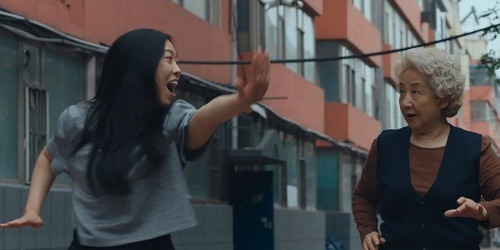
An impressive debut feature from Lulu Wang, "The Farewell" is a special kind of family tale, featuring a breakout performance from comedian Awkwafina. Rooted from Wang's true story (which was first turned into an episode of "This American Life"), "The Farewell" is unlike any kind of family drama you've seen; a deeply personal, sad but ultimately uplifting film about the things we choose to tell (and not tell) those closest to us.
13. "Asako I & II," directed by Ryusuke Hamaguchi
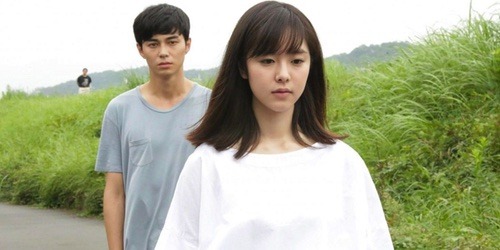
Following up his six-hour film "Happy Hour," Japanese filmmaker Ryusuke Hamaguchi's "Asako I & II" clocks in at just two hours but still manages to pack in a number of the same themes. Here, a young woman named Asako (Erika Karata) briefly falls in love with a handsome boy named Baku (Masahiro Higashide) in her hometown in rural Japan before he suddenly vanishes. After moving to Tokyo a few years later, Asako spots Baku — but he tells her his name is Ryohei (also played by Higashide). From there, a relationship blooms and unravels. Similar to "Happy Hour," Hamaguchi's effortless ability to draw an emotional response from the ebbs and flows of deep, personal relationships (between friends, family, lovers) is unparalleled.
12. "Climax," directed by Gasper Noé
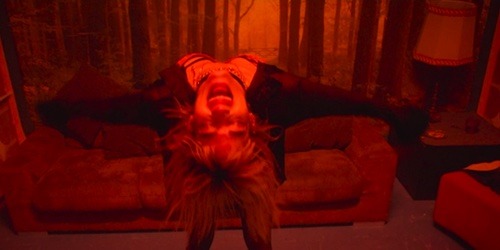
Gasper Noé is often hit-or-miss with most movie audiences. His films are always provocative and his latest feature "Climax" is no exception. Set in the 90s, a French dance troupe rehearses a routine ("Climax" opens with the single best scene of 2019) before celebrating for the night with some snacks and sangria — which someone has spiked with LSD. The rest of the film plays out like a perverse whodunnit while the group, led by Sofia Boutella, tries to figure out what's going on before losing their minds and allowing deep secrets ruin their lives.
11. "The Irishman," directed by Martin Scorsese

Martin Scorsese's long-awaited return to the gangster flick resulted in a three-and-a-half-hour epic. "The Irishman," which reunites Marty with Robert De Niro and Joe Pesci, also stars Al Pacino (the first time the actor appeared in a film by the acclaimed director), as Jimmy Hoffa. The film is Scorsese's most meditative work outside his films about religion. There is as much subtext to the film as there is text, making "The Irishman" a dazzling feat of filmmaking and storytelling, featuring outstanding performances from its three leads.
10. "Gloria Bell," directed by Sebastián Lelio

Since his 2017 breakout film "A Fantastic Woman," Sebastián Lelio's career has been quite quiet. Nevertheless, the English-language remake of his own Chilean-Spanish film "Gloria," re-titled "Gloria Bell," is a stunning piece of filmmaking. Starring Julianne Moore as the titular character, the film follows the middle age single woman through the ups and downs of her dating and family life. It's an unassumingly beautiful film that is gorgeous and features one of Moore's best performances to date.
09. "Her Smell," directed by Alex Ross Perry

Alex Ross Perry's career has dramatically shifted since working with Elisabeth Moss on the 2015 thriller "Queen of Earth." Instead of making quirky New York City centric love stories (a la Noah Baumbach and Woody Allen before him), Perry once again teams up with Moss for "Her Smell." Structured like a five-act play, the film follows Becky Something (Moss), the leader of an all-girl punk group. In what is Moss's best performance to date, Becky is an addict and downright evil at times as she manipulates those around her. It's a dizzying feat of filmmaking that puts Moss to the test.
08. "Ad Astra," directed by James Gray
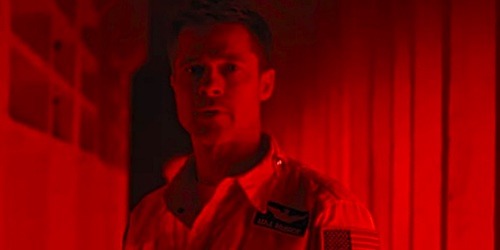
Brad Pitt won the Oscar for his performance in "Once Upon a Time... In Hollywood," but "Ad Astra" was his best performance in 2019. Following up his 2016 masterpiece "The Lost City of Z," director James Gray continues on his path of making ambitious epics, moving from the Amazon to the depths of our solar system. Here Pitt's Roy McBride is on a mission to find his father (Tommy Lee Jones), who is literally lost in space. Roy has to confront his issues with his father as he battles moon pirates, rabid baboons and his inner demons. "Ad Astra" is not only an impressive film for Grey, but Pitt's turn as the sad spaceman is nuanced and shows how much range the Hollywood icon actually has.
07. "Honeyland," directed by Ljubomir Stefanov and Tamara Kotevska

"Honeyland" made Oscars history when it became the first film to be nominated in both Best International Feature Film and Best Documentary Feature — and for good reason. Clocking in at just 85 minutes, Ljubomir Stefanov and Tamara Kotevska's stunningly beautiful film follows Hatidže Muratova, a beekeeper living in a remote village in North Macedonia. But "Honeyland" is so much more than that; it's a universal story about our delicate ecosystem, fickle Mother Nature, taking care of our family and having bad neighbors. In what may seem like a specific tale turns out to be incredibly relatable, with Stefanov and Kotevska achieving some of the best nonfiction filmmaking in years.
06. "Once Upon a Time... In Hollywood," directed by Quentin Tarantino

Quentin Tarantino's penultimate film "Once Upon a Time... in Hollywood" is a love letter to Tinseltown. Here, he honors the summer of 1969 as the film industry is thriving with newcomers like Sharon Tate (Margot Robbie) and aging stars like Rick Dalton (Leonardo DiCaprio in his best performance ever). Rick is a TV villain and his stunt double Cliff Booth (Brad Pitt) is along for the ride. "OUATIH" is more of a hangout movie than something one would expect from QT; it's more in line with the sophistication of "Jackie Brown" than the over-the-top cartoon violence found in "Django Unchained." Like Martin Scorsese's "The Irishman," "OUATIH" is a contemplative and meditative look at aging, youth culture and America through the prism that is Tarantino.
05. "Midsommar," directed by Ari Aster
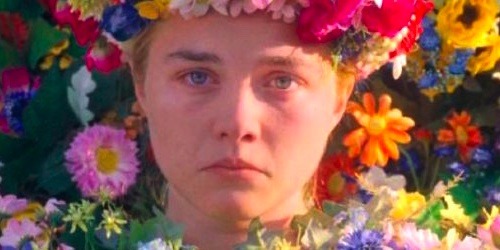
Following up his horror masterpiece "Hereditary" just one year later, Ari Aster returned with the daylight gonzo vacation nightmare "Midsommar." Like with "Hereditary" and its star Toni Collette, Ari gets a stunning performance out of rising star Florence Pugh, who plays Dani. She just suffered a major tragedy and is decides to go on a trip to a remote village in Sweden with her aloof boyfriend (Jack Reynor) and his college pals. The trip, of course, is worse than anyone could have imagined and plays out in complete sunlight, making Aster's daytime nightmare incredibly upsetting and one of the most vibrant horror films ever made.
04. "Pain and Glory," directed by Pedro Almodóvar
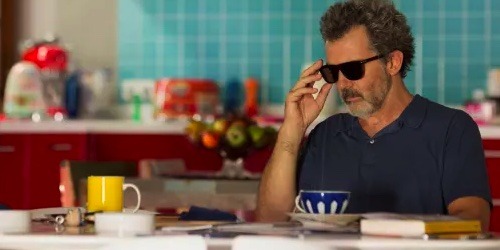
Spanish auteur Pedro Almodóvar returned last year with "Pain and Glory," unlike any movie he's made in his nearly 40-year career. It's a deeply personal film and one of his most quiet and contemplative. It also reunites the filmmaker with Antonio Banderas — in his best role ever — who starred in Almodóvar's earlier films and his 2011 horror film "The Skin I Live in." Despite it being far removed from Almodóvar's oeuvre, it still fits in snugly with his work, resulting in a beautiful and self-reflexive film about age, lost love and the past.
03. "Little Women," directed by Greta Gerwig
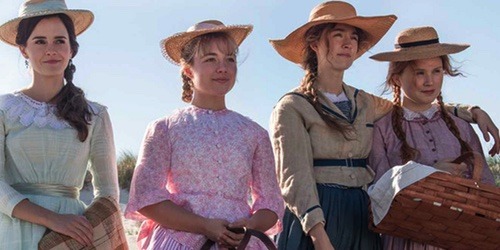
On paper, remaking "Little Women" in 2019 might have seemed like a fool's errand. But Greta Gerwig's take on the classic story, and her follow up to her breakthrough film "Lady Bird," gave a new purpose to Louisa May Alcott's centuries old story about the March sisters living in Concord, Mass. During the Civil War. Here, Gerwig assembles the hottest cast of 2019 (Saoirse Ronan, Timothée Chalamet, Florence Pugh, Emma Watson, Laura Dern, Eliza Scanlen, Bob Odenkirk, Louis Garrel, Chris Cooper and Meryl Streep), enlists Alexander Displat for the score and Yorick Le Saux to carry out luscious cinematography. But it's Gerwig's breakdown of the story and her daring changes to the novel that make her rendition of "Little Women" vital and beautiful. She manages to retain the Alcott's tone and vibrance while bringing something wholly original to a story we've seen time and time again, proving Gerwig is a master storyteller.
02. "Parasite," directed by Bong Joon-ho
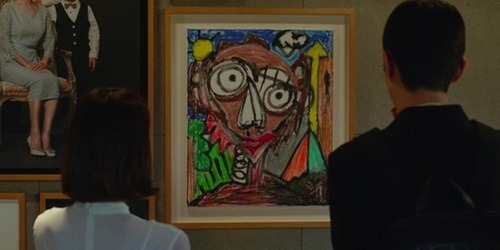
Bong Joon-ho's "Parasite" took the world by storm. A true tour de force, the South Korean film started hot out of the gate, winning the Palme d'Or award at the Cannes Film Festival, blazing its way to win Best Picture at the Oscars earlier this month. And rightfully so — "Parasite" is a relatable tale about class struggle unlike any other film in its genre. Joon-ho, who has other masterpieces under his belt ("Mother," "Memories of Murder"), is in total control of his film; a true craftsman and storyteller, who knows how to build tension, introduce bits of comedy and create compelling characters. The film is complex yet fully understandable; a truly accomplished piece of filmmaking that will become a gateway for world cinema.
01. "Marriage Story," directed by Noah Baumbach

Noah Baumbach's "Marriage Story" is his most sophisticated and considered film to date. Following a couple (Adam Driver and Scarlett Johansson) going through a divorce, Baumbach crafts a personal story with a raw script that is executed by astonishing performances from its two leads and its wonderful supporting cast (Laura Dern, Alan Alda, Ray Liotta, Merritt Wever). For so many films about finding love, there are few that are directly about the end of a relationship or divorce and Baumbach's intimate tale is a dazzling feat of not only writing, but acting and understanding of how all the moving pieces of a movie can coalesce into a breathtaking piece of art.
#movies#film#cinema#best of 2019#film 2019#the beach bum#harmony korine#a beautiful day in the neighborhood#marielle heller#mr. rogers#toy story 4#disney#alita: battle angel#robert rodriguez#the lighthouse#robert eggers#robert pattinson#a long day's journey into night#bi gan#doctor sleep#mike flanagan#Stephen King#6 underground#michael bay#ryan reynolds#uncut gems#adam sandler#josh safdie#benny safdie#the safdie brothers
50 notes
·
View notes
Note
Hey can you give me a rundown of what happened to Megan Fox during transformers. I literally love her, but only knew that she wasn’t happy!!
OH MY GOD I AM SO SORRY THIS TOOK FOREVER!
But - *breaks out binder* - of course!
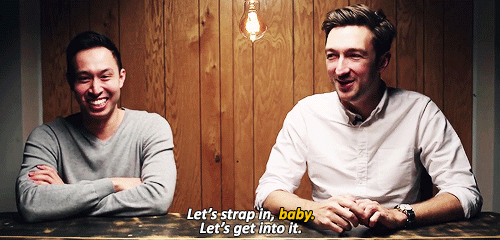
Even thought I’m not Megan I’d like to say thank you for asking. I think it’s important her story is shared and teaches others.
The Mary Sue did the best pile-up of Megan’s mistreatment during several of her movies (including Jennifer’s Body) in her article When Are We All Going to Apologize To Megan Fox, but I’ll keep this limited to her Transformers life.
After Transformers came out, Megan was seen as an Angelina Jolie-esque sex pot, but making a lot of money. We’d heard the story before with Kate Moss and Scar Jo. A lot of audiences only cared about her looks. We only heard good things about the films, so it was surprising when out of no where we all heard she quit T3 due to “differences” with the director Michael Bay and that he was “verbally abusive”. In high school at the time I thought “so what? suck it up? you’re an actress, aren’t you used to some directors being jerks?” Now that I’m older and a professional actress I can tell you yeah, people do do that, but they don’t have the right to. Megan called Bay out on his shit in an era where it still wasn’t allowed.
The actress compared the director to Adolf Hitler and Napoleon in an interview with Wonderland Magazine in which she calls Bay "a tyrant" on set. The interviewer was clearly on Bay’s side and only asked “so when did you know you were hot” when she said those were what Bay’s notes to her would be. “Be hot” or “just be sexy”.

We all know that scene! The bike and Megan scene. It was her first appearance in the films and launched her to being “america’s hottest actress”. Bay had this scene redone a number of times and kept telling Megan to arch her back more. He was clearly playing into the idea of male fantasies and pin up positions.
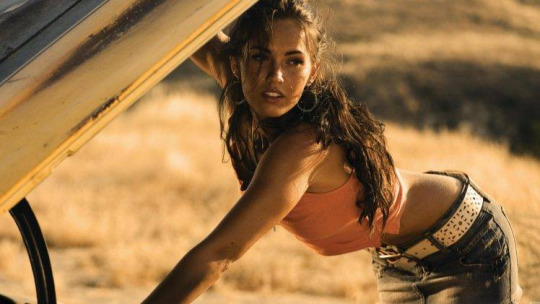
Megan also had to deal with that “directive approach” in this scene too.
In a 2009 interview with Jimmy Kimmel, she talked about when she was 15 years old and Bay had her in a bikini and six-inch heels as an extra on the set for Bad Boys II. Because she was 15 and too young to drink at the bar, the “solution” was “to then have me dancing underneath a waterfall getting soaking wet. And that’s… At 15. I was in 10th grade. So that’s sort of a microcosm of how Bay’s mind works.”
He had her wash his Ferrari as part of her his audition, while he filmed it. She never got the footage and when Bay was asked he pulled a “er...I don’t know”.
She also stated that she feared for her safety during production, saying "[Bay] has you do some really insane things that insurance would never let you do."
With Allure magazine, Fox expressed concerns about developing skin cancer due to excessive tanning as a result of Bay’s displeasure with her skin tone.
Sadly, Megan wasn’t given roles at the status of her Transformers blockbuster numbers for a long time, the closest come to Teenage Mutant Ninja Nurtles (which was with...ugh, Michael Bay). She walked out on a mega million dollar movie franchise. Other directors and companies clearly didn’t want to risk having her do that to them too.
Shia LeBeouf told The LA Times, “Megan developed this Spice Girl strength, this woman-empowerment stuff that made her feel awkward about her involvement with Michael, who some people think is a very lascivious filmmaker, the way he films women. Mike films women in a way that appeals to a 16-year-old sexuality. It’s summer. It’s Michael’s style. And I think she never got comfortable with it. This is is a girl who was taken from complete obscurity and placed in a sex-driven role in front of the whole world and told she was the sexiest woman in America. And she had a hard time accepting it. When Mike would ask her to do specific things, there was no time for fluffy talk. We’re on the run. And the one thing Mike lacks is tact.”
Megan Fox was sexually empowered and fighting for her rights before everyone else took up arms and did too. She was the Les Mis Barricade Boys of Hollywood and it took several years for the rest of France aka Hollywood to get in on the Revolution. A lot of people victim shamed Megan when she came out with the truth. This was years before the MeToo movement and she was called a liar, disrespected and her career was severely stripped. Megan was asked why she hasn’t spoken out during the movement since she clearly has proof and history, but it’s obvious her treatment when she did has introverted her. “I just didn’t think based on how I’d been received by people, and by feminists, that I would be a sympathetic victim.” She doesn’t think she’s relatable enough to be believed and “ I don’t know that I want to feel anything about it because my words were taken and used against me in a way that was — at that time in my life, at that age and dealing with that level of fame — really painful. I don’t want to say this about myself, but let’s say that I was ahead of my time and so people weren’t able to understand. Instead, I was rejected because of qualities that are now being praised in other women coming forward. ”
Here’s some other examples of Michael being a misogynistic jerk to other actresses and some of the way he disgraces actresses/women in films.
A great piece on Megan’s new show and her take on the MeToo movement.
#anyways that's just a start!#sadly you can google megan and harassment and tons of articles come up#with a lot of things michael did as well as how her career and life was altered after she spoke out#lucilleifer
64 notes
·
View notes
Text
January 22nd, 2018: LA’s Hottest New Neighborhood, The Dumpster District
BY CASSIDY ST. CHARITY, L.A. MAG EDITOR-IN-CHIEF
Move over, Silverlake. There’s a hot new neighborhood in town that everyone’s flocking to for its charm, casual nature, and undeniable smell: the Dumpster District.
Formerly a sewage plant next to a waste management site 20 minutes south of Downtown, LA’s Dumpster District has exploded with vibrance and activity ever since some of Hollywood’s least wealthy and most ambitious young up-and-comers started moving to the area. What many began calling “a mass move to a plot of land that is literally shit” has now become the go-to destination for everyone who wants to be the first in living somewhere, an honor that people in Los Angeles hold very close to their hearts.
First, world renowned chef Gus Stuyvesant made the move from his parent’s house in Larchmont to a $300-a-month shared duplex in the Dumpster District and opened up his new restaurant “Scrounge”, an eclectic mix of fresh dishes inspired by local trash. Some favorites include the Day-Old Chicken on Q-Tip-Kabobs as well as an entirely original “Taco Shells and Lettuce Served In A Trash Bag”. This arrival onto the culinary scene was even noticed by famous LA food critic Jonathan Gold, as noted by him putting “Scrounge” on his list of “Top LA Restaurants That Won’t Stop Bothering Me”.
When it comes to fashion, the Dumpster District really made its arrival onto the scene when Liz Fern, famous executive-assistant and frequent Facebook-status poster and commenter, moved from her beautiful studio in WeHo to a tenement-chic shared-bathroom apartment building (for $250) and opened up her boutique clothing store “Ill Will”. Here, in a move that is decidedly the opposite of “Good Will”, instead of taking used clothes and selling them for cheap, she took new clothes and sold them for more. When people told her “that’s just a regular store” she said “well it’s also my store”, and here we are. Her fashion is very much inspired by her Dumpster District surroundings--dresses made out of CVS receipts, bomber jackets crafted from cut-up milk cartons, and of course shoes made from, well, different parts of old shoes. Fern says that sales aren’t great, but everything is so priced that if she sells one thing a month she can make living expenses for the month, so she seems to be doing alright.
Perhaps the most exciting addition to the Dumpster District, a haven for ambitious youth with no money, is the burgeoning art scene that has begun to blow up by the masses. A film studio, Rancid Pictures, has nestled its way along the Shitty Strip (what they call the main business thoroughfare in the dumpster district), thanks to up-and-coming filmmaker and USC Film grad student Chandler Crescent. Crescent’s film studio has turned the Dumpster District into a sort of Mecca for young filmmakers who want to make a lot of stuff but don’t really have any ideas. Take a walk around the Dumpster District on any given day and you’ll see multiple film crews shooting generic drug dealing scenes, saccharine love scenes, and of course, lots and lots and lots and lots of gun fights. Yes, these young filmmakers are exploring things that many people before them have explored, and since they’re in the Dumpster District, nobody is stopping them. In fact, Crescent’s first film, “Love’s A Bitch”, about a man who magically turns everyone he loves into a bitch, was submitted to Sundance this past year, and he was the first person in the history of the festival to get a personal call from the President of Sundance, telling him “please never submit anything again”.
Yes, whether we like it or not, the Dumpster District is alive and well, and while it seems to be attracting a very specific group of people, here’s hoping that they all stay there and get sick from poop diseases or something because honestly, the rest of this city is happy they’re over there and not still around us.
1 note
·
View note
Text
Top 10 Greatest Johnny Depp Movies of All Time

1. Pirates of the Caribbean
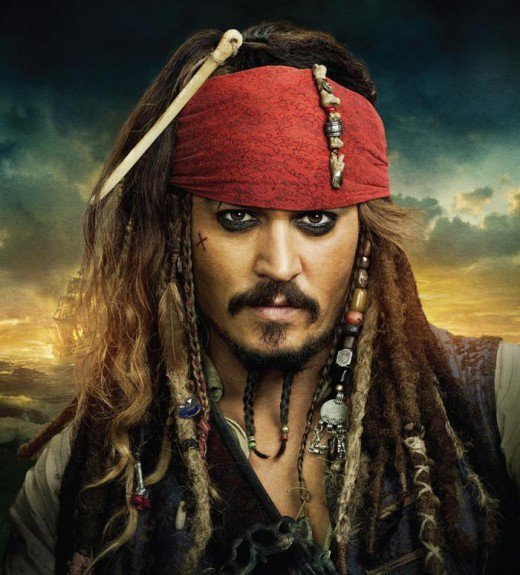
Johnny Depp's character as Captain Jack Sparrow is probably the most famous of all. He nailed the role - the dark makeup, pirate attitude, rum lover, excellent gun and sword fighter, and a happy-go-lucky person. Isn't he the hottest pirate in movie history?
Fun facts:
Originally, he wanted Jack Sparrow to have no nose and be afraid of silly things like pepper and the common cold. However, Disney rejected his idea.He wore contact lenses which served as sunglasses so he wouldn't be squinting in the sun all the time.He also improvised Jack Sparrow's catch phrase, "Savvy?"Captain Jack is portrayed as having gold teeth in the film. The gold teeth were Depp's idea, but he predicted that executives would want fewer gold teeth, and told his dentist to implant more gold teeth as a bargaining tool. Sparrow's final number of gold teeth in the film was what Depp had envisioned all along.
2. Sweeney Todd: The Demon Barber of Fleet Street

It may be Captain Jack Sparrow who is our all-time favorite Johnny Depp character, but we couldn't deny the fact that he's a splendid killer in Sweeney Todd. In this movie, he's not just some Benjamin Barker who seeks revenge, but one who can sing while giving a nice shave. He really is a demon barber!
Fun facts:
There are some scenes in the movie where Sweeney opens his razor very quickly. It is actually a mechanical razor. There is already a button that he would press to have the razor open, which he hides with his finger. He personally requested the prop department to design this razor for him, as he had difficulty handling the real razors.In preparation for his role, he had recorded demo tapes of himself in West Hollywood, working with old friend and music producer Bruce Witkin to shape his own vocals without a voice coach. He also practiced singing the musical while filming Pirates of the Caribbean: At World's End (2007).The extra-large jacket costume he worn in the movie is a Belstaff dark leather trench, designed exclusively for him.
3. Edward Scissorhands
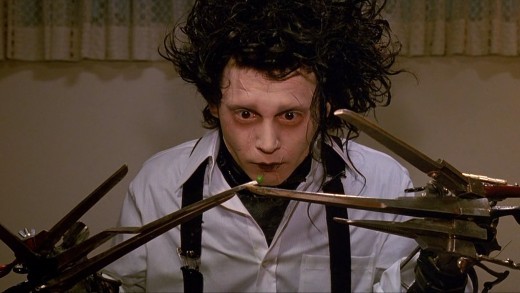
Johnny Depp's character as Edward Scissorhands is just a proof that he's not always the cool or bad guy. He can also be a sweet, innocent gentleman who's not hard to love. We all want to give Ed a cuddle, right?
Fun facts:
Johnny Depp admitted that he "cried like a baby" when he first read the script.He convinced Winona Ryder to appear in this film, so she dropped out of The Godfather: Part III (1990).This is fascinating: Edward says only 169 words in the film.This film is the first collaboration between Tim Burton and Johnny Depp.
4. Sleepy Hollow

Fun facts:
According to history, Ichabod Crane was a very unattractive man. Johnny Depp offered to add prosthetics to his face to make himself look ugly, but Tim Burton wanted to base the character on Crane's more unattractive personality traits - more on his reported squeamishness and eccentricity.
He initially found the idea of Christina Ricci being his love interest in the film to be rather odd, seeing as he's known her since she was nine years old.
5. Charlie and the Chocolate Factory
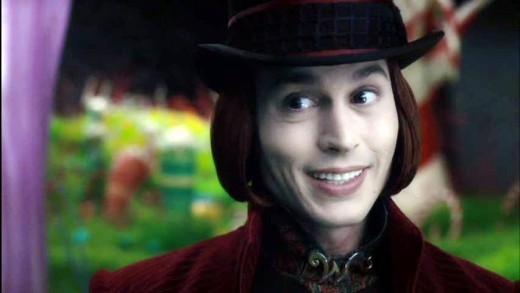
The sweet world of Charlie and the Chocolate Factory is one of our childhood movies. Johnny Depp's Willy Wonka looks funny and vibrant, which is just visually appealing for children. Rolling Stone magazine wrote, Depp goes deeper to find the bruises on Wonka's secret heart than what Gene Wilder did.
Fun facts:
Johnny Depp was the only actor Director Burton considered for the role. signed on the role without reading the script under the intention of going with a completely different approach than what Gene Wilder did in the 1971 film adaptation.Depp and Burton derived Willy Wonka's character from children's television show hosts.As a child, Johnny Depp was allergic to chocolate. Quite ironic, right?This is Depp's second chocolate-based movie.
6. Finding Neverland
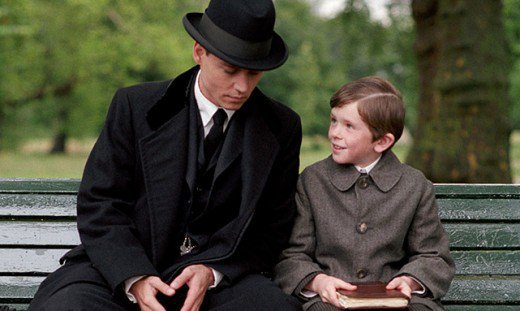
Finding Neverland is a movie which shows that Johnny Depp can play a protagonist's role in a fantasy world without wearing colorful makeup. His role as J.M. Barrie, though understated, was a promising one. He brought just the right amount of grace and charm to the real-life story.
Fun facts: Directly after filming those scenes, Johnny Depp told the director that they would end up deleting those scenes. Guess what, he's right!
Johnny Depp was the first of the cast members to sign on to the film. Kate Winslet was next.
During the formal dinner scene, Johnny Depp played a prank by placing a "fart machine" under Julie Christie's chair. He had a remote control that he used to trigger a fart sound from the device. The children are laughing so hard at that than from playing with the spoons.
7. What's Eating Gilbert Grape

This is the kind of movie that shows how versatile Johnny Depp is. His role as Gilbert Grape is just so enchanting, it would make you feel emotional right away. In addition to his performance, young Leonardo DiCaprio is also astonishing. Variety magazine told that, "Depp manages to command center screen with a greatly affable, appealing characterization."
Fun facts:
Johnny Depp felt really bad about having to insult Darlene Cates' character, "Momma", and would often apologize to her after shooting. Depp said to Cates, "Man, I want you to know how much I hated having to say those things about you, or about your character."He also had the idea of playing Gilbert Grape as someone who seems constantly half asleep/half awake--someone numb to the peculiarities in his life. Juliette Lewis completely agreed with his interpretation of the character. Even still, he's worried he was boring by playing Gilbert so mildly. Lasse Hallström, however, agreed with Lewis, and thought that Depp nailed the part. In an interview, Depp said, "It was a hard time for me, that film, for some reason. He was always talking about these video games, you know? I told you it was kind of a dark period... 'No, I will not give you a drag of my cigarette while you hide from your mother again, Leo.'" Depp concluded, "I'd say the absolute truth is that I respect Leo a lot. He worked really hard on that film and spent a lot of time researching. He came to set and he was ready to work hard and all his ducks were in a row."
8. Donnie Brasco

This rich,satisfying movie is adapted from Joseph Pistone's novel about his own experiences as an undercover FBI mole. Depp himself played Pistone and his alter-ego, the titular Donnie Brasco. Critics praised his performance especially: a Salon.com review hailed his performance as "sensational." New York Magazine called him "graceful" and found his acting highly believable: "We can believe that the mob might take him for a tough, ambitious young hood—he has the wariness and the self-confidence that creates an aura."
Fun facts:
In preparation for his role, Johnny Depp met with Joseph D. Pistone in person for a number of times. He also took shooting lessons from the FBI.He spent months together with the real Joseph D. Pistone before shooting. Most of the time they lifted weights together.One of the many reasons why Johnny Depp was chosen to cast as Brasco was because he looked kind of Italian. In reality, he says he's "One part Cherokee and the rest mutt."Al Pacino was originally going to play Brasco. However, when he switched to Lefty, he recommended Johnny Depp.
9. Ed Wood
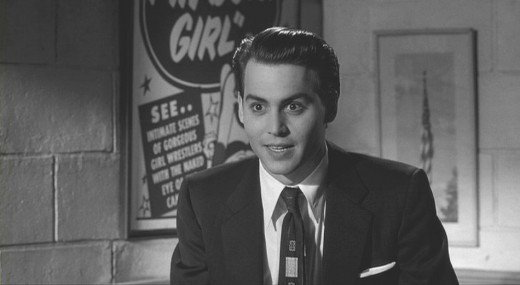
Another film directed by Tim Burton, the 1994 biopic stars Depp as cult filmmaker Ed Wood. It may not be as popular as some of the other Burton-Depp collaborations, but this movie proved that Depp is more than capable of handling different roles, even without all the flashy makeup and costumes. Though it is not a box-office hit, it earned several praises from other critics and audiences alike, and earned Depp a Golden Globe nomination.
Fun facts:
Johnny Depp has said that his characterization of Edward D. Wood Jr. was a mixture of "the blind optimism of Ronald Reagan, the enthusiasm of the Tin Man from The Wizard of Oz (1939) and Casey Kasem."Ed Wood's Hollywood home overlooking his nightclub "The Viper Room" was previously owned by Bela Lugosi.This is Tim Burton's first R rated film.
10. Alice in Wonderland
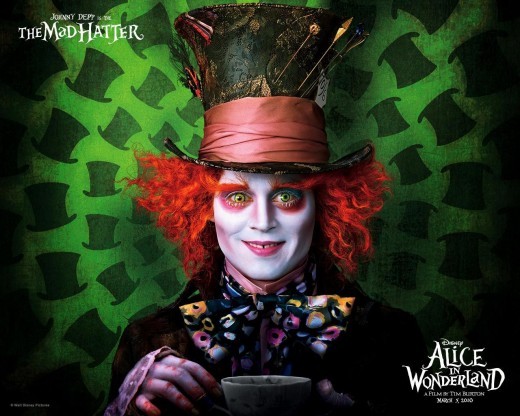
Another colorful role by Johnny Depp is being the Mad Hatter in the 2010 Alice in Wonderland movie. Mia Wasikowska, the actor for Alice, said that, "both (Alice and Mad Hatter) feel like outsiders and feel alone in their separate worlds, and have a special bond and friendship." Burton also explained that Depp "tried to find a grounding to the character ... as opposed to just being mad."
Fun facts:
This film marks the 7th time Johnny Depp has worked under the direction of Tim Burton.Johnny Depp admitted that he found the process of filming on a green screen "exhausting", and "befuddled by the end of the day". He also said that he prefers "an obstacle" while in filming.Tim Burton and Johnny Depp worked hard to give the Mad Hatter more depth and presence than in past portrayals. In fact, the pair swapped sketches and themes for the character prior to creating this new version.Johnny Depp watched the Scottish comedy show Rab C. Nesbitt (1988) to perfect his character's Glaswegian voice.
Read the full article
0 notes
Text
MARCH 5: Watermelon Woman is released in the US (1997)
Today marks the 20th anniversary of the public release of indie gem The Watermelon Woman, by filmmaker Cheryl Dunye! And a restored edition just came out on DVD and iTunes as well, so if you’re looking for something good to watch today, we definitely recommend you check it out, especially since film critic Jeannine DeLombard described the sex scene between the protagonist, Cheryl, and another woman as “the hottest dyke sex scene ever recorded on celluloid.” (If that doesn’t convince you, what will?)
youtube
The film revolves around Cheryl, a young black lesbian who works in a Philly video rental store (Cheryl Dunye plays the lead role). Through her job, she starts watching old movies from the 30s and 40s that feature black actresses, who most often go uncredited. One movie in particular, Plantation Memories, catches Cheryl’s eye: there, the black actress is credited only as “The Watermelon Woman.” This inspired Cheryl to find out who she is and make a documentary about this actress. In parallel, she navigates dating and issues of racial, lesbian, and class identities in her personal life.
This was the first feature film to be made by a black lesbian. It premiered in 1996 at several international festivals, and won both the Teddy Award for Best feature film at the Berlin International Film Festival and the Audience Award for Outstanding Narrative Feature at L.A. Outfest.
The complex messages and the legacy of the movie still resonate with audiences today, as it does tackle police racial profiling, racism, homophobia and lesbophobia, and cultural & historical amnesia. In an interview with Jude Dry, Cheryl Dunye explained:
“I did the research, I did look in black film history, and found nothing but homophobia and omission... I did look at queer film history, I read Vito Russo, and found no mention of race. So I hope that my film spurs these younger people to think about their identities within the context of representation in the media.”
If you’ve watched this movie, what did you think?
-AK
#365daysoflesbians#the watermelon woman#cheryl dunye#film#movie#1990s#usa#20th century#filmmaker#indie film#lesbian#black lesbians#wlw#lesbian film#lgbt#lgbt history#queer#queer women#queer history#events#black queer women
171 notes
·
View notes
Text
The 8 Best Historical Tours in San Francisco and the Bay Area for Seniors
https://healthandfitnessrecipes.com/?p=8440
San Francisco is a town of endless reinvention, from a muddy piratical outpost to a Gold Rush boomtown to a shipping epicenter to a wrecked and burnt-out husk to a phoenix reborn. It’s been a counterculture haven and the beating heart of a new tech and capitalist revolution.
But reinvention doesn’t mean ignoring its past. San Francisco is layered, each era impacted by the ones that came before it and affecting the next. The past is still alive, here. The counterculture still dances and the Gold Rush still attracts and pirates still reach scabrously from the muddy bay…
You know all this already because no matter what else, San Francisco is home.
If you’re an older adult living here, you’ve been witness to some of San Francisco’s transformations, and you know the way the city has changed. You probably have a good working knowledge of some of San Francisco’s history. But no one can know everything.
That’s why we encourage you to take a historical walking tour of San Francisco. These can shed more light on parts of the city you thought you knew, and illuminate times and places you had no idea existed.
Walking is great exercise for older adults, and if you can do it, this summer and fall is a great time for it. You can work out your body and your mind, and see beneath the top layer of the city you call home. You’ll love what you discover underneath.
8 Great Historical Tours of San Francisco
To be honest, there are more great historical tours in San Francisco and the Bay Area then we can really keep track of. This is just a small sample to get you going, and hopefully, we have a little something for everyone.
The Castro: Gay and Lesbian History
Price: $25
Duration: 2 hours
Time: Year-round
Location: Castro District
San Francisco was one of the leading cities in the long struggle for LGBTQ civil rights. It was a place where people could be themselves, and be free to love whom they wanted. It wasn’t always easy, as the killing of Harvey Milk and the horrors of the AIDS crisis showed, but the community thrived in its strength and togetherness and changed the city and the world.
This guided tour takes you all around the world famous Castro District, the heart of San Francisco’s LGBTQ history, showing you places like Milk’s home and offering a moving visit to the original AIDS quilt. It is solemn and joyful, a celebration of love, sadness, and courage. And it’s fun. It’s important. It’s a vital part of America.
Emperor Norton’s San Francisco Time Travel
Price: $30
Duration: 3 hours
Time: Year-round
Location: Depart from Union Square
Joshua Norton was a British citizen and vagabond who came to San Francisco in the 1840s. In 1859, tired of politics as usual, he declared himself Emperor Norton I, Ruler of America and later, Protector of Mexico. While neither of these proclamations exactly took, he became a local celebrity, and continued to make declarations befitting an emperor. He was treated with amused deference in the city, not being mocked, but accepted as one of San Francisco’s great characters.
And you can get a tour of history with him, as a Norton I impersonator takes your group on a rollicking time-travel tour of the city, the Barbary Coast, the earthquake regions, and more. You’ll hear about Norton himself as well as other characters who have added so much flavor to San Francisco. Who, really, have given it life.
Chinatown Walking Tour
Price: $35 (does not include optional lunch)
Duration: Around 2 hours
Time: Year-round
Location: St. Mary’s Cathedral
It shouldn’t come as much of a surprise to learn that San Francisco has always attracted immigrants from the west as well as the east. Many people from China moved here throughout the centuries (including, of course, before California was a state or a part of the United States). They aren’t separate from mainstream San Francisco history; they are a vital part of it.
That’s why a tour of Chinatown is important. It isn’t a tourist area; it’s a living, breathing section of the city, rich in history, filled with character and characters, and a hugely important contributor to San Francisco and the region. On this tour, you’ll see stores you may have missed, eat food you may not have tried, and see the splendor and quiet beauty of a temple.
Computer History Museum
Price: $17.50
Duration: Varies
Time: Open Tuesday-Sunday, 12-5pm
Location: Mountain View, CA
This is the only non-walking tour, although all museums are sort of walking tours. But it’s ok that this one is idiosyncratic: the whole museum is. It’s a tribute to self-proclaimed geekery, to tech wizardry, and to the combination of rigorous science and incredible information that transformed Silicon Valley and altered the world.
Of all of the regions transformations, this one might have been the most dramatic, and the Computer History Museum captures all of that with equal parts reverence and irreverence. You can see how determined women and men had the vision to create a new technology, and the world they bequeathed us.
San Francisco Silent Film
Price: Free (donations welcome)
Duration: 2 hours
Time: Saturdays
Location: Pacific and Kearney
Bullit. Vertigo. Dirty Harry. 48 Hours. The Maltese Falcon. The Conversation. San Francisco is one of the most famously cinematic cities in the world. Often, we really only think of films from the 50s to the 70s. But from the earliest days of cinema, filmmakers recognized the potential of the fog and the hills, the bustling city juxtaposed against the ferocious bay, and wanted part of it.
This free tour from San Francisco City Guides shows you the alleys and buildings in which some of the most famous silent films of all time were shot. You’ll walk in the footsteps of Chaplin, Pickford, Chaney, and Valentino and see where Fatty Arbuckle created the first modern media scandal. It’s a salacious and enlightening tour and not to be missed.
1850’s San Francisco
Price: Free (donations welcome)
Duration: 2 hours
Time: Sporadically throughout the year (see calendar)
Location: Transatlantic Building
We don’t often think of San Francisco in the 1850s, but that was the time of its first real boom, in the echoes of the Gold Rush. It was a time when people from around the world flocked to make their fortune. Some did; most did not. Those who did created the city we know today.
Like so much else of the world in that time, there was a decided French influence, and the architecture and culture of San Francisco’s first great boom took on a decidedly Parisian air. This free tour shows you how this made the city and still influences it. This is one of the first layers built up after the depredations of the Gold Rush turned native villages to muck and grime, and it is surprisingly elegant and continues to impact San Francisco today.
Fisherman’s Wharf
Price: Free (donations welcome)
Duration: 1 hour
Time: Sporadically throughout the year (see calendar)
Location: Mermaid Fountain
Fisherman’s Wharf is another one of those places that seem sanctified by tourism and bleached by ubiquity, but it isn’t, really. It’s an active market, bringing in fresh seafood that goes out around the country, but especially makes its home in San Francisco’s restaurants, from the hottest haute cuisine to the greasiest spoon. This tour shows you behind the scenes.
What’s more, The wharf area has long been a slithering and scaly place, from the earliest days when this was a fishing village, and a coastal haven, before it turned to finance and computers. The tour will remind you that the stubborn reality of San Francisco is that it is a port town, tied to the ocean, and beholden to the bounty of the sea.
Also, the fish are absolutely delicious.
1906 Earthquake Tour
Price: Free (donations welcome)
Duration: One hour
Time: Sporadically throughout the year (see calendar)
Location: 525 Market Street
One of the most important events in San Francisco’s history is the 1906 earthquake that shattered the city and ravaged it with fire. San Francisco was not yet old. It was a new city, barely removed from the death of Emperor Norton, and still acclimating to the end of the frontier. And then it was burned rubble.
But that didn’t matter. It rebuilt and became stronger. It didn’t forget what was under its feet and instituted more and more stringent earthquake protections. This tour is a reminder that earthquake preparedness for older adults is crucial, but also a reminder of the indomitable and renewing spirit of this great city.
You and Historic San Francisco: Always Changing but Still The Same
In a lot of ways, a city is like a person. Many people might only see one facet, whether that is Silicon Valley or the LGBTQ community, just like people might say you’re just like your mom or reduce you to your profession. But we all know neither of those is true. A person, like a city, is a collection of everything that has ever happened to them, building and growing on itself, and facing the next day with the weight and blessing of accumulated experience.
Because a city, like a person, can age and change but still remain the same, with the same beating heart and the same indomitable spirit. No matter how you see yourself in the mirror or how many skyscrapers have risen where ramshackle gambling dens and fancy Parisian mansions once stood, it’s still the same.
So celebrate San Francisco. Celebrate its oft-sordid past and its gleeful present, its booms and busts, its characters and catastrophes, its death and rebirth. In doing so, celebrate yourself. You’ve earned it. You’re here, in this great contradictory sprawling wild city. You’re still you.
At Institute on Aging, our programs and services help older adults, their families, and caregivers explore aging together, through good times and bad, as an adventure and a journey. Contact us today to learn more.
The post The 8 Best Historical Tours in San Francisco and the Bay Area for Seniors appeared first on IOA Blog.
Credits:
Original Content Source
0 notes
Text
Hyperallergic: A Polish Filmmaker Explores Trans Identity Through Abstraction
Still from Endless by Wojciech Puś (all images courtesy of the artist)
Per the gracious invitation of artist Wojciech Puś, I had the opportunity to be on location in various parts of Poland during the summer of 2016 with the close-knit cast and crew of the experimental feature film Endless, which he wrote and directed. A work in progress, the film can be described as non-narrative, exploring trans themes with hints of the psychological thriller genre. Puś’s eclectic points of reference include the 1962 film Last Year at Marienbad (directed by Alain Resnais), Lana Del Rey’s music, and Beatriz Preciado’s 2013 book Testo Junkie: Sex, Drugs, and Biopolitics in the Pharmacopornographic Era.
To provide some brief context, I was in Poland in fall 2015 and summer 2016 on a Fulbright grant to explore artworks examining LGBTQ subject matter. In 2014, having visited several cities in Poland as part of a study-abroad trip I had organized for my MFA and BFA art students at Florida International University in Miami, I believed that Poland was on the verge of becoming a hotbed of creativity for artists working on LGBTQ themes. In hindsight, I jumped the gun. LGBTQ subject matter has long been taboo to discuss, even within the progressive art scene. I do not mean to imply the Polish art world is homophobic, but certainly there was caution (understandably so, in some cases) on the part of some people I met about divulging information about artists in connection to this sensitive issue in a country where more than 90% of the population is Catholic.
Still from Endless by Wojciech Puś
Still from Endless by Wojciech Puś
That Puś’s film is being produced at all is surprising, given that the official funding bodies of Poland have not embraced it. According to the artist, the lack of interest in LGBTQ subject matter is a longstanding issue, not something that can be solely traced to the new nationalistic anti-refugee government, which is opposed to LGBTQ rights, too. Indeed, the country’s Minister of Justice, in his comments regarding the plethora of rainbow flags visible in the streets during the recent protests of the Polish government’s restructuring of the courts, equated homosexuality with anti-patriotism.
Yet Puś’ film is not about LGBTQ visibility or rights. It’s closer in spirit to how performance studies scholar José Esteban Munõz describes queerness as distinct from the pursuit of rights in his seminal book Cruising Utopia: The Then and There of Queer Futurity (2009). He writes, “Queerness is not yet here. Queerness is an ideality. Put another way, we are not yet queer. We may never touch queerness, but we can feel it as the warm illumination of a horizon imbued with potentiality.” The stills of a surreal scene filmed at a colonnaded space in Warsaw’s Palace of Culture resonate with Munõz’s statement. Puś mobilizes cool blue lighting: it is icy and melancholic, yet it suffuses the entire space, enveloping the subjects. In this way, they begin to blur with their surroundings, and the possibility emerges of moving away from the now and here toward the then and there (invoked in the title of Munõz’s book). Indeed, the hottest part of a flame is blue. In its queerness, Puś’s visual style is generous and porous.
youtube
Endless is loosely based on the life of a trans woman who grew up in Łódź. Puś, though, is not interested in showing the subject’s journey from a man to a woman, or from point A to point B. To do so would be to traffic in the fiction of the stability of identity — neither A nor B is fixed, after all. Instead, he approaches trans identity through the aesthetic mode of queer abstraction, a term borrowed from art historian David Getsy’s writings that means, on the most basic level, using abstraction rather than figuration to explore LGBTQ experiences.
Still from Endless by Wojciech Puś
Still from Endless by Wojciech Puś
Still from Endless by Wojciech Puś
Not that figuration is eschewed altogether. For instance, in one scene a character looks into a mirror, which begins to vibrate in synch with the bass of the haunting music of Lana Del Rey. In the background, another figure appears, wearing a strapless emerald green dress. The former closes their eyes and begins to sway to the music; soon, the latter walks behind them and begins to mimic their movements. (I am using the pronoun “they” because in this film the characters are not easily coded as male or female.) As the mirror vibrates, the commingling bodies appear to blur into one. Now and again the mirror is still, and this effectively snaps the figures back into distinct bodies. What the viewer witnesses is not straightforward (pun intended), and it is this productive ambiguity in which Puś revels.
There is a blurring not only of subject and subject, but subject and object, too. Figure and landscape often metaphorically merge into a seamless whole. In one scene, the scantily clad characters described above use selfie sticks to take photos of themselves near a natural pool nestled in the mountains. The hypersexuality and mysteriousness of both characters is echoed by the wild, lush flora and the overall surreal quality of the setting. In this way, the characters become entangled with the landscape.
Still from Endless by Wojciech Puś
Still from Endless by Wojciech Puś
Given that Puś’s project exceeds the fixed category “gay,” I would not contextualize it within the history of art by primarily gay men in Poland that is beginning to be unearthed by scholars like art historian Paweł Leszkowicz. Puś’s work is also different than that of his Warsaw-based contemporary peer Karol Radziszewski, an artist who often deals more explicitly with gay male lives. It makes more sense to consider Puś’s work in a broader international context, outside of the art world. There are certainly connections with David Lynch, as art critic Cathy Drake points out in reference to Puś performance in Warsaw. Puś himself intimated as much when he described aspects of his film to me via text: “Even if you try to hold on to one character it dissolves into something you can follow only with your intellect or intuition.”
I would also position his work within the genealogy of “new queer cinema.” There are certainly affinities between Puś’s work and that of Derek Jarman, in particular, his gender-bending Caravaggio (1986) and his abstract Blue (1993). Puś’s presentation of a fraught or false utopia coupled with a strong use of color is reminiscent of Todd Haynes’s Safe (1995). Finally, the sexy and violent world of Gregg Araki’s The Living End (1992) comes to mind, as well. These are all provisional connections, of course, given the movie is still in production. It is slated to be finished by the end of 2018.
Still from Endless by Wojciech Puś; photo by Kuba Ceran
Still from Endless by Wojciech Puś
Still from Endless by Wojciech Puś
More work by Puś can be viewed at the Museum of Modern Art in Warsaw.
The post A Polish Filmmaker Explores Trans Identity Through Abstraction appeared first on Hyperallergic.
from Hyperallergic http://ift.tt/2vN5GTs
via IFTTT
0 notes